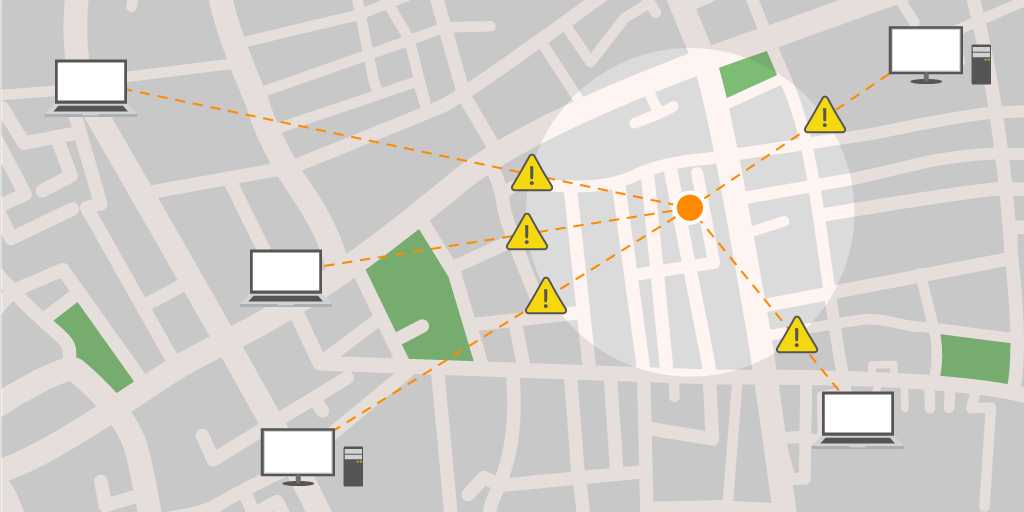
The global Covid-19 health crisis has affected all of us. One of the impacts we saw with most of our customers is a very sudden shift to remote work, regardless of the organizational and infrastructural readiness. We realize this is imposing significant pressure on IT departments around the globe, and we want to offer some guidance and resources to help you manage this forced and rapid change successfully.
Keep in Touch With Your Assets
First things first, let’s make sure your Lansweeper installation is scanning all the assets it should. Your reality changed quickly, and many devices probably aren’t where they used to be in your local network. Lansweeper, however, can continue to help you remotely scan all the necessary information about your devices and users, no matter where they are. Because it’s only by knowing what you have that you can manage and secure it.

Our best solution to tackle these kinds of remote situations is installing LsAgent on your devices. However, installing LsAgent while the devices are already at home is not straightforward but can be useful in certain scenarios; see the LsAgent documentation in our Knowledge Base. Keep track of which workstations have the agent deployed through this report.
If remotely installing LsAgent isn’t an option now, chances are a lot of your coworkers are working from home using a VPN connection to your organization’s servers. Luckily with Lansweeper, you can scan assets connecting over a VPN connection precisely the same way you’re used to. IP Range and AD scanning targets will pick up these remote devices with ease.
In addition, we suggest you enrich this dataset and make sure Active Directory and O365 information is pulled in. Lansweeper will aggregate everything and link users to the devices they are using.
In case you are using a Mobile Device Management solution, consider setting up an integration with Lansweeper. Or, if your organization has a lot of Chromebooks in use, you can also keep track of those through our integration with the Google Admin Console. Getting all your IT data centralized in one location will help you with troubleshooting, as possible issues arise and keep you in control of the situation.
Manage Your Assets Remotely
Now that you have a clear picture of all devices, you can get down to business. Lansweeper has a lot of features, but here are the ones that stand out in remote IT Asset Management.
With the reality shifting as fast as it did, you’ll want to get an overview of the situation. IP locations group assets based on their IP address. Set up all your ranges and label which ones are indicating connectivity over VPN. This IP Location Overview Report will show you which range devices are in, which ones are unknown, and the ones tracked with LsAgent.
The ‚Last Seen‘ field of an asset indicates when Lansweeper last saw it connected to the network. This report will show an organized overview of all workstations and servers and highlight which ones weren’t seen in the last seven days. This will help you locate missing devices that aren’t connecting to the network.

It’s not just the assets and users that went suddenly mobile you should keep in check, but also the servers they are connecting to. Lansweeper can keep an eye on server performance and report on load over time so you can ensure that your remote connections remain stable.
Communication solutions are key to a productive remote workforce. Lansweeper’s software scanning lets you check if the tools you use for remote work or communication are installed on all of the client machines. With only a small modification to this Software Audit Report, you can get a complete list of all machines with specific software installed.
Remote shouldn’t mean out of sight. The Asset Uptime Calendar tracks when a device was turned on, in sleep mode, and turned off.
With assets and users physically out of reach, remote support, and maintenance is the way to go. Custom Actions will help you out with devices connecting over a VPN. Quickly find the device you’re looking for, launch an RDP session, run remote scripts, and much more.
Lansweeper’s Deployment Module is entirely agentless. You can roll out an update or, for instance, install missing remote communication software at scale with little to no prerequisites, even over a VPN connection.

Another subject we should handle is security. An unprepared and sudden change like this brings out the best and the worst in people. The risk of a security breach is quite high. We will dedicate our next update to providing you with suggestions on how to manage security in these times.
We are here to help you. If you need any further assistance applying the above tips to help you deal with this new remote work environment, please reach out. Our support team is here to give you a helping hand.